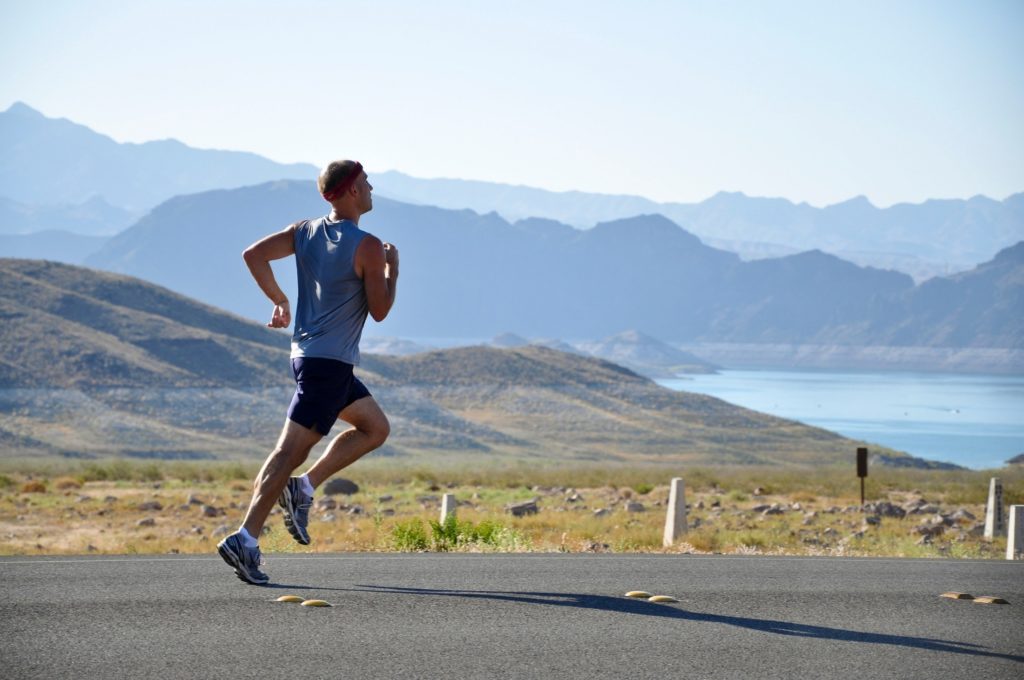Are you one of the growing number of Americans using walking, jogging, or running to increase your physical activity and regain your health? In my office I often hear patients tell me they are beginning a walking/running program to shed pounds and get healthy. This is a fantastic idea. After reading this blog the beginning runner should be able to say that they are more informed than ever and ready to begin a journey to health using one of the cheapest, most accessible, options available running. As with any new exercise program, see your healthcare practitioner for approval prior to starting a new program.
Benefits of running
The benefits to running can be quite rewarding. Benefits such as: increased cardiovascular health, lower blood pressure, lower cholesterol, increased metabolism, increased self-esteem, stress reduction, sense of achievement when you reach your goals, can do it nearly anywhere, convenient indoors or out, can be a social interaction, heart becomes stronger and will typically pump with less effort while resting, aerobically fit people typically have resting heart rates around 50 while others are more in the 70 range, increased lung capacity, weight bearing exercise stimulates your body to produce and maintain stronger/denser bones in combination with the nutrients necessary, and more.

Types of running
- Treadmill – safe, weather is not an issue, less work out for your buttock and hamstring muscles, good for rehab following injury, less pollution, no stop lights, no cars, no dogs, lower impact compared to hard surfaces like cement
- Road- great way to see a city, body produces vitamin D, fresh air, uneven due to the crown of the road, risky with cars, weather issues, dogs can be an issue, may need to carry self defense items such as a stick or spray,
- Cement – usually flat, the hardest surface causing the most impact
- Track – softer terrain, less interesting
- Hill running
- Trail – softer terrain, less impact, no cars, animals and insects, may require more grip shoes, ankle and lower extremity injury risks due to unevenness
- Racing – 5k, 10k, half marathon, marathon, ultra marathon 50+ miles
- Fun runs – mud run, obstacle courses
- Cross country
- Bear foot running
Keys to avoiding injury as a new runner
Arguably the number one thing new runners need to do is get fitted by a professional for proper shoes. These large running shoe manufactures spend millions of dollars on research and development of shoe technology for specific types of running and for specific types of feet; then some people ruin it by buying the wrong type of shoe for their feet. Some people have what we would call a normal foot and ankle, while an estimated 60% of people pronate (feet roll inward too much) and are more susceptible to injuries such as Achilles tendonitis, back pain, knee pain, rigid big toe, and arch pain. A third category is people who have feet that supinate (feet roll outward usually have high arches which doesn’t absorb impact as well). Supinators are prone to plantar fasciitis, ITB syndrome, and Achilles tendonitis. Understand that running shoes will wear out after about 350-500 miles; wearing out is correlated to their ability to absorb impact and not tread wear. Running is traumatic, and proper running shoes are designed to reduce and absorb some of the forces incurred while running, this is usually called cushioning. The more cushion, the more impact a shoe can absorb but the heavier a shoe will be; small framed people, or sprinters, will usually complain that a high absorbing shoe as being too heavy.
The next biggest offender to new, and even experienced runners, is increasing distance too soon. Most experts suggest increasing your distance in 5-10% increments; it should be noted that most runners should keep track of their weekly mileage. A similar situation would be going from flat running to running up and down hills too soon in your running journey, as this really exercises you leg muscles to a more advanced level. It is always recommended to have scheduled rest days. A rest day is a good opportunity to change things up a bit, by hitting some weights or exercising your core muscles; in fact many experts recommend training your core 1-2 times per weeks to help with running.
Just like anything, poor posture and ergonomics can be another big offender to new runners. Good running posture is achieved by having your head, shoulders, and hips level while standing up straight with your head over your shoulders. Be sure to relax, try belly breathing, do not make tight fists, swing your arms from the shoulders and not the elbows, do not carry your shoulders too high, try swinging your hands at or below your belly button, do not swing your arms so hard you cross them in front of you as this uses extra energy. As for your stride, you should be running with smaller steps, with your feet landing underneath you in what is called mid foot stance, and not taking big long steps out in front of you and landing hard on your heels.
Another big offender to new runners is the side cramps or pains. This is very common and can be the result of muscle spasms, or pains due to eating food prior to a run. It is recommended that when these side cramps occur that you stop running and walk while taking deep breaths. If symptoms persist seek care from your healthcare provider. Also, if you continually find yourself injuring, reinjuring, or straining, a particular part of your body while running, try having an expert watch you run for imperfections; additionally consider seeing a chiropractor or physical therapist for length and strength checks of your muscles, and alignment checks of your spine and pelvis.

Thoughts for new runners
- Most people will find their cardiovascular system will adapt to the new program faster than their joints/muscles
- Intervals can be helpful – times of running at different paces like walking the corners of the track and sprinting the straights
- Run against the direction of traffic
- Using headphones can inhibit your ability to hear your surroundings
- Run with a partner
- Be consistent
- Stay on the trail, inform others of your route, change your route occasionally to avoid stalking
- Check out new technology – watches, clothing, shoes, this can make it fun and interesting
- Set a goal – example being able to run a mile under 10min
- Sign up for a fun run, you will be surprised how fun some of these 5-10k runs can be
- Go to a specialized running store
- Get plugged into local running groups
- The talk test- you should be able to have a conversation while running
- You don’t have to track miles, track time
- Hydrate at least an hour before your run
- Static stretching after- stretching with no movement usually isolating a particular muscle held for typically 30 seconds, learn to stretch properly, stretching improperly can cause injury
- Dynamic warm up before running, dynamic stretching is a movement that uses multiple muscles and is typically repeated a number of times
- Keep a running journal, some of the watches and pedometers will do this for you, often they can plug into your home computer and can track your progress, many cell phones can download apps that can do this as well
- Goals can be time, blood pressure, weight, shape, miles
- Cool down, walk/jog last moments of a run
- A good warm up prior to a run should take between 5-30 min
- Before a race cut back on your training 1-2 weeks prior
- Cold weather running – use layers as they can be taken off when you warm up, gloves, hats, scarf, avoid cotton socks which tend to get soaked, ski mask to help warm air prior to breathing it in,
- Hot weather running – watch for signs of trouble like headache/dizziness/leg cramps, wear light weight materials, sun reflective colors, visor or hat, avoid cotton clothes use a more breathable material, sun block, avoid noon, find shade to run in
- Night running – not recommended, but wear a light, wear reflective clothing, stay on well lit roads/trails
- Hydration- before during and after runs, hydrate days before a long run, avoid coffee and alcohol as they dehydrate, your urine should be nearly clear, camel backs are a good idea
- Nutrition – before should be something light about 2 hours prior, during a run graze on high carbohydrate, 30 min after a run eat higher protein
If this blog has sparked, or enforced, your desire to get out there and run, please do. Get plugged in to a running group, personal trainer, etc to help guide you on this journey. One curious thought is that often from a young child we never give running much thought; for example what is your stride like? What kind of shoes should you wear? What type of clothing should you wear? How much should I run? The answers are out there full of interesting people willing to share them with you.
